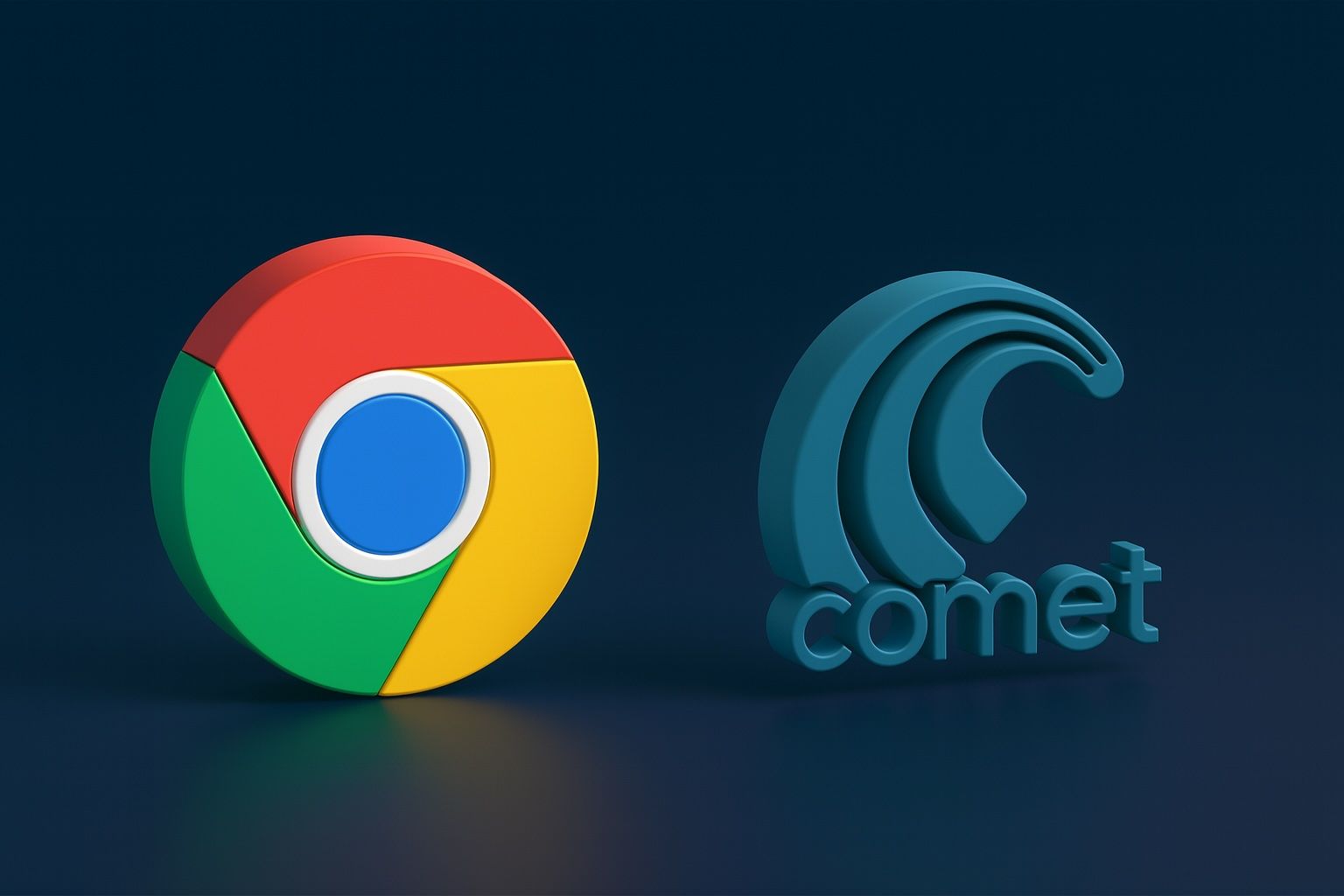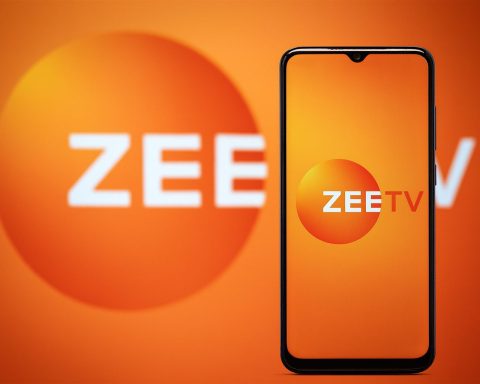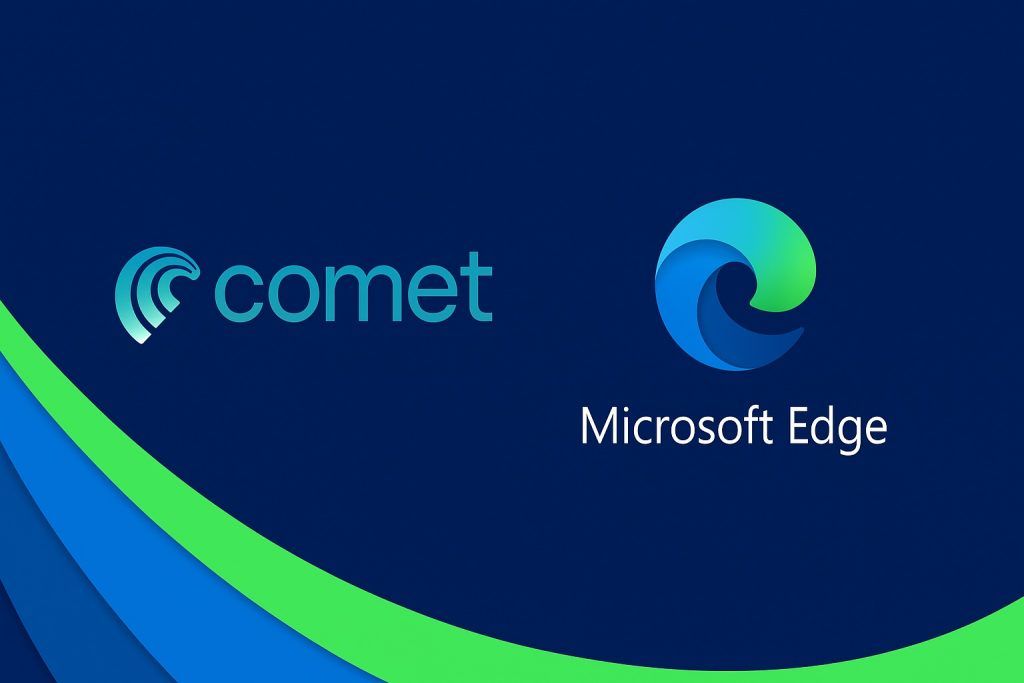- Perplexity’s Comet browser – an AI-native web browser acting as a personal assistant – launched in limited release in July 2025 and amassed millions on its waitlist before opening free to everyone in October 2025 [1] [2]. Comet’s built-in AI assistant can browse the internet with you, answer questions, and even execute tasks on websites via natural language commands [3] [4].
- Google Chrome remains the world’s dominant browser with about 70% market share [5]. To defend its lead in the AI era, Chrome is adding generative AI features – e.g. automatic tab grouping, AI-created browser themes, and a “Help me write” tool for drafting text on any webpage [6] [7]. Google is also integrating its newest Gemini AI model into Chrome to further enhance browsing with AI [8].
- AI Assistants in Browsers: Comet’s assistant goes beyond chat – it can take actions like making restaurant reservations or clicking buttons for you [9] [10]. In one example, a user asked Comet to find top sushi restaurants with OpenTable availability and then rank them by Yelp ratings – Comet autonomously searched multiple sites and delivered results [11]. Chrome’s approach is more conservative, adding AI aids within the traditional interface (e.g. summarizing pages or suggesting drafts) rather than full autonomy.
- Strategic Clash: Perplexity positions Comet as an “AI browser” challenger to Google’s search and browser empire [12] [13]. The startup has raised over $1.5 billion in funding and even cheekily offered to buy Google Chrome for $34.5 billion in 2025 amid antitrust talks [14] [15]. Google’s strategy, meanwhile, is to evolve Chrome (and Google Search) with AI features like the Search Generative Experience (SGE) and in-browser AI tools, ensuring users stay within its ecosystem for next-gen search [16].
- Competing Browsers Embrace AI: Microsoft’s Edge browser integrated an AI Copilot (Bing Chat powered by GPT-4) in early 2023, letting users chat, summarize pages, and compose content from a sidebar [17] [18]. Brave introduced its privacy-focused Leo assistant (built on an open Meta Llama-2 model) directly in the browser, offering on-page summaries and Q&A without sending data to third-party AI providers [19] [20]. Opera launched Aria (a browser AI assistant) and in 2025 rolled out Opera Neon, a paid “agentic” browser that can “browse with you or for you,” automating tasks like filling forms or writing code via built-in AI agents [21] [22].
- Firefox & Others: Mozilla’s Firefox has taken a cautious approach, recently adding optional generative AI features (e.g. an AI chatbot sidebar where users can choose models like Anthropic’s Claude or ChatGPT) and on-device AI for features like grouping tabs – all with a focus on privacy and user control [23] [24]. Upstart players are emerging too: The Browser Company, maker of Arc, stopped major updates to Arc in 2025 to develop a new AI-centric browser called “Dia,” which lets you “chat with your tabs” and use AI to summarize or cross-reference pages [25] [26]. Hardware startup Rabbit Inc. is even building a standalone AI device and Rabbit OS that can control apps and web services via a “Large Action Model,” essentially an AI agent that turns natural language into UI actions across any software [27] [28]. And OpenAI itself is rumored to be working on its own web browser to challenge Chrome [29].
Introduction
The humble web browser has become the latest front in the AI revolution. Google Chrome, the long-reigning titan of internet browsing, is facing a new wave of challengers built around artificial intelligence. Chief among them is Perplexity’s Comet, a newly launched browser that bills itself as “the AI browser that acts as your personal assistant.” Unlike traditional browsers, Comet’s core is an AI agent ready to answer questions, automate web tasks, and transform how we interact with the internet [30] [31]. This report provides an in-depth comparison of Perplexity Comet and Google Chrome – examining their browsing capabilities, search integrations, AI features, and the user experience – and evaluates how an AI-native upstart stacks up against a market-dominant incumbent. We’ll also survey the broader landscape: how competitors like Microsoft Edge, Arc/Dia, Brave, Opera, Firefox and even AI assistants (ChatGPT, Claude, etc.) are shaping the “browser wars” in the age of AI.
Perplexity Comet: An AI-Native Browser Assistant
Perplexity’s Comet is a web browser designed from the ground up to have a conversational AI built into every facet of the experience. Upon opening a new tab in Comet, users are greeted by a Comet AI assistant chat panel that’s aware of the current page and ready to help [32]. Rather than a passive search box, the assistant invites you to ask questions or give commands. “The Comet Assistant browses the internet with you, there for any questions or tasks you think of along the way,” the Perplexity team explains [33]. In practice, this means you can ask Comet to research information, summarize complex articles, draft emails, write code, or carry out multi-step tasks online – all through natural language prompts.
One hallmark of Comet’s design is its emphasis on agentic actions. Comet isn’t limited to retrieving information; it can take actions on your behalf directly in the browser. For example, early users have shown it executing complex chains of actions, such as finding restaurants and making reservations. In one test, a user simply told Comet to “find the highest rated sushi restaurants in San Diego that have a 7PM Friday reservation for two on OpenTable, then rank them by Yelp rating.” The Comet agent autonomously navigated to OpenTable, identified available restaurants, cross-checked their Yelp reviews, and returned a ranked list – a process that would have required dozens of manual clicks and searches if done by a human [34] [35]. Comet can even perform transactions when instructed (e.g. “Book this restaurant for me”), essentially acting as an AI concierge for the web [36] [37].
To indicate when it’s performing such autonomous browsing tasks, Comet highlights the webpage with a colored glow and provides a stop button for user control [38]. Early reviewers describe the experience as both “wild” and promising – watching the browser physically click and scroll through pages on its own is a glimpse of how AI can turn browsers into personal agents [39] [40]. “It feels like the first true AI browser,” noted one early review, “a way to explore the web at the speed of thought” [41].
Under the hood, Comet integrates Perplexity’s advanced AI search engine and large language models (it can leverage powerful models like GPT-4 for subscribers). Unlike traditional search which yields a list of links, Perplexity’s engine retrieves information from across the web and directly answers in natural language, citing sources. This search capability is built into Comet’s assistant, giving it strong “knowledge” of the web to answer questions in context [42]. The assistant can cite sources for transparency – a continuation of Perplexity’s answer-with-sources approach, now embedded in the browsing experience.
Beyond web tasks, Perplexity is extending Comet’s AI into other daily workflows. The company introduced an Email Assistant (for premium users) that you can CC on threads to handle scheduling or draft replies automatically [43]. They also announced “Background Assistants” – essentially AI agents that run simultaneously in the background to tackle to-do list items for you asynchronously [44] [45]. All of these tie into Comet’s vision of an AI personal assistant that lives in your browser and works across web, email, and more. “Your personal team of AI assistants eliminates any task on your to-do list… background assistants are a platform where your curiosity becomes productivity,” the company wrote [46].
Perplexity’s CEO Aravind Srinivas has articulated a bold ambition for Comet: he sees it eventually evolving into something akin to a browser-as-operating-system, where powerful reasoning models handle multistep tasks continuously. “I’m betting that in the right environment – a browser with access to all these tabs and tools – a sufficiently good reasoning model… could get us to where a recruiter’s week of work is just one prompt,” Srinivas told The Verge [47] [48]. In his view, an AI browser can become an always-on digital assistant, with processes running in the background constantly automating workflows that today eat up users’ time [49].
User Experience: Despite its radical AI capabilities, Comet still provides all the basics of a modern Chromium-based browser (it’s built on Chromium, so it supports Chrome extensions, etc.). Early users report that Comet allowed them to import their bookmarks, passwords, and cookies from Chrome/Arc, so switching was relatively seamless [50]. The browser interface is familiar, aside from the persistent AI sidebar. The difference is in what the user can do: instead of manually navigating multiple tabs, you can delegate tasks to the AI. This has led to a surge in user curiosity; Perplexity observed that new Comet users asked 6–18× more questions on day one of using the browser than they normally would [51]. By lowering the friction to ask and automate, Comet aims to make “asking new questions… the delightful default mode of internet use” [52].
Importantly, Comet’s assistant is not just a generic chatbot – it is positioned as “your AI, not the AI.” The assistant carries over context between tabs and remembers user preferences in order to personalize results [53]. Every new tab spawns a fresh assistant instance ready to help [54]. And Comet is experimenting with voice interactivity, offering an industry-leading voice interface so users can simply speak commands to control the browser or query the AI assistant [55]. This voice control, combined with the agent’s ability to manipulate pages, delivers a futuristic feel – one Reddit user remarked it’s “one of the most futuristic AI experiences available, like controlling the web with your voice” (a nod to the voice mode that lets Comet execute spoken instructions) [56].
All of this is now available to anyone for free – as of October 2025, Perplexity opened Comet’s download to the public worldwide [57] [58]. The launch comes after an invitation-only beta period in which demand far exceeded supply: “millions of people” joined the waitlist for Comet, making it “the most sought-after AI product of the year,” according to Perplexity’s team [59]. That enthusiasm, plus a war chest of venture funding (Perplexity has reportedly raised over $1.5 billion, including a $200M round in Sept 2025 at a $20B valuation [60] [61]), indicates the high hopes riding on this AI-native browser.
Google Chrome: Dominance Meets AI Evolution
Google Chrome has been the undisputed king of browsers for over a decade, used by an estimated two-thirds to three-quarters of all web users. As of late 2025, Chrome holds roughly 70–72% of global browser market share (StatCounter shows ~71.8% in Sep 2025) [62], leaving competitors like Safari (~14%) and Edge (~5%) far behind. Chrome’s success stems from its speed, simplicity, and tight integration with Google’s services – especially Google Search, which is Chrome’s default (and for most, the primary gateway to the web). This integration created a feedback loop that’s been enormously profitable for Google: Chrome funnels billions of search queries to Google’s engine, whose ad revenues then help fund Chrome’s development, further entrenching its market position [63] [64]. Little wonder that any disruption to this loop – such as an AI that might change search habits or a mandate to break up Chrome from Google – raises concern in Mountain View.
Facing the seismic shift of generative AI, Google’s strategy has been to infuse Chrome with AI features while leveraging its existing dominance. Rather than re-invent the browser from scratch, Google is gradually adding AI-powered enhancements to Chrome’s familiar interface. In 2023, the company introduced the Search Generative Experience (SGE) in Google Search, which surfaces AI-generated answers at the top of Chrome’s search results for users enrolled in Search Labs. By mid-2024, Google began baking more AI into Chrome’s own functionality.
In a January 2024 announcement, Google unveiled three new generative AI features for Chrome [65] [66]:
- AI Tab Organizer: Chrome can automatically group your multitude of open tabs into suggested categories, using machine learning to cluster similar topics [67]. (For instance, if you have a bunch of tabs open about planning a vacation, Chrome might group those together and label the group “Trip Planning ✈️”.) This helps manage tab overload without manual dragging.
- AI-Powered Theme Creator: Using a text-to-image diffusion model (similar to those behind generative art), Chrome lets users generate custom browser themes from a prompt [68] [69]. You can describe a subject, mood, or style (e.g. “animated serene aurora borealis”) and Chrome will create a matching theme for your browser’s look and feel. This feature brings creative AI to personalization – no design skills needed.
- “Help Me Write” in the Browser: Perhaps the most impactful, Chrome added an AI writing assistant that can be invoked in any text box on any website [70]. By right-clicking a text field and choosing “Help me write,” users can get Google’s AI to draft text for them based on a brief description. Whether it’s composing a polite email reply, writing a product review, or even generating a formal rental inquiry, the AI will generate a suggested draft which the user can then edit or accept [71]. This effectively brings Google’s generative text capabilities (similar to Gmail’s Smart Compose or Google Docs’ AI helper) into every web interaction via Chrome.
These features are optional “experiments” that users need to enable in Chrome’s settings (under a new “Experimental AI” section) [72]. They began rolling out in Chrome version 121 for Windows and Mac, initially in the U.S., as early public previews [73]. Google explicitly disabled them for enterprise and education accounts at first – a reminder that they were still in beta and being tested with consumer users [74].
Beyond these, Google has signaled more to come. The Chrome team teased that integration of Google’s next-gen Gemini AI model is on the roadmap to help users “browse even easier and faster” [75]. (Gemini is Google’s new large multi-modal model, poised as a major competitor to GPT-4 in late 2023/2024.) We can expect Gemini’s capabilities – like advanced summarization of web content, video understanding, or complex question answering – to eventually be embedded in Chrome or the Google search experience within Chrome.
Chrome has actually been using AI and machine learning under the hood for years to improve security and usability – such as malicious site detection, phishing protection, and even generating automatic captions for videos [76] [77]. But those features were mostly invisible to users. What’s changed in 2023–2024 is user-facing generative AI tools becoming part of browsing. For example, Chrome also introduced a built-in webpage summarizer in 2022 (key points extraction) and now is evolving that into more interactive assistance. Google’s vision is that Chrome remains the place where you search, chat, and get things done – so if people start expecting to talk to their browser or have it create content, Chrome will offer that. As one Google VP put it, these additions make Chrome an even more “efficient and personalized” way to browse [78] [79].
User Experience: For the average Chrome user, these AI enhancements will feel like handy new features rather than a radical overhaul. Chrome’s interface and core workflow remain the same – you still navigate via tabs, type in the Omnibox, etc. The AI bits are tucked into corners: a new option in a context menu here, a new button in the sidebar there. For instance, “Help me write” appears when you right-click, and if used, it opens a pop-up suggesting text. The AI-generated search answers appear above the usual link results, but users can scroll past them if undesired. This design reflects Google’s cautious approach: they must introduce AI without alienating users or breaking the simplicity that made Chrome popular.
Chrome’s strategy can be seen as augmenting the user rather than replacing user actions. Unlike Comet, Chrome isn’t going to book a table for you or auto-click through your email unsubscribe links – at least not in its current incarnation. Instead, it might help you draft the email to the restaurant or summarize the newsletter you’re unsubscribing from. Google is effectively layering AI as an assistant that suggests and complements, but the user stays in control of executing website interactions. This is partly philosophical and partly practical (to avoid things going wrong autonomously). It’s also influenced by Google’s business model: they ultimately want you to click search results and ads (which a fully autonomous browser might circumvent). So Chrome’s AI features today are about boosting productivity and convenience within the traditional browsing paradigm.
However, Google is certainly paying attention to the agentic trend. Internally, the company reportedly experimented with more ambitious AI integrations. A leaked project codenamed “GIFI” was aimed at integrating AI image generation into Chrome, and another, “Searchalong,” would allow a chatbot to read and summarize webpages for you in Chrome’s sidebar [80]. These sound a lot like what competitors are doing. With rivals like Comet and Opera Neon pushing the envelope, Google might gradually enable Chrome to do more “autonomous” things. But given Chrome’s massive user base and Google’s cautious stance on brand trust, any such moves will likely be incremental and opt-in.
One external factor also looms: antitrust pressures. The U.S. Justice Department’s ongoing antitrust case has proposed remedies that include potentially forcing Google to divest or sell Chrome to break its monopoly coupling of search and browser [81]. In 2025, Perplexity’s CEO even seized on this idea by publicly offering to buy Chrome for $35 billion [82] – a tongue-in-cheek gesture that nonetheless underscores how strategic Chrome is in the AI search battle. While a court recently ruled Google won’t (for now) be forced to sell Chrome [83], the mere possibility put Google on notice: if Chrome weren’t part of Google, its default search might not be Google – which opens a lane for AI-centric search competitors (like Perplexity, OpenAI, or others) to gain distribution [84] [85]. Thus, Google has every incentive to keep innovating Chrome+Search as an integrated offering, making it as AI-powered as any newcomer, to justify why they should stay unified.
AI Features & Browsing Experience: Comet vs Chrome
Comparing Comet and Chrome is in many ways comparing two different paradigms for web browsing in the AI era:
- Browsing vs Asking: Chrome is still fundamentally a user-driven browser – you, the user, click links, type queries, and navigate, albeit now aided by some AI suggestions. Comet shifts more toward an ask-and-act model – you ask the AI assistant for an outcome, and it figures out how to navigate for you. For example, a Chrome user wanting to compare camera shopping options might manually open tabs and maybe use an AI summary feature on each. A Comet user could simply say, “Find me the best DSLR under $1000 and show top 3 deals,” and let the agent do the legwork. This means Comet can save time on complex or repetitive tasks, but it also requires users to trust the AI with more autonomy.
- Search Integration: Google Chrome’s search integration is essentially Google Search itself. Type anything in Chrome’s address bar (Omnibox), and you get Google results (unless changed). With SGE enabled, those results might include a generative summary at the top. Chrome’s AI will cite sources but ultimately encourages clicking into sites [86] [87]. Comet, on the other hand, uses Perplexity’s answer engine by default. When you ask Comet’s assistant a factual question, it will typically provide a direct answer with footnoted citations linking to the source websites – often summarizing across multiple sources in one go [88]. This can reduce the need to click multiple links. Comet essentially treats search results as material to synthesize, whereas Chrome presents them for you to explore. For users, Comet can feel more efficient for Q&A and research tasks (fewer open tabs), though it also abstracts away the underlying sources until you inspect the citations.
- Content Summarization and Understanding: Both browsers now allow you to get summaries of long pages, but in different ways. In Chrome, if you have SGE or certain extensions, you might get a summary or key points of a page (Google was testing a “Summarize” feature in Chrome’s side panel). Comet’s assistant can summarize any page on demand via a simple prompt (“Summarize this page” or even more targeted, “What’s the main argument of this article?”). Comet’s advantage is the freeform nature of the query – since it’s a conversational agent, you can ask very specific things about the page (e.g. “In this PDF research paper I have open, what methodology did they use in section 3?”). Chrome’s built-in tools are less conversational; they might extract highlights but not have the flexibility of an open AI agent. However, Chrome users can always go to an external tool (like ChatGPT’s web browsing or a browser extension) for similar Q&A, whereas Comet has it natively integrated.
- Executing Tasks: As discussed, Comet’s distinguishing feature is executing actions (filling forms, clicking buttons, navigating multi-step processes). Chrome does not have any built-in capability for multi-step automation via AI. At best, one could install a third-party extension or use a script. This is a major differentiator: Comet aims to accomplish goals (with the web as a medium), while Chrome aims to provide information and tools for the user to accomplish their goals. However, with autonomy comes risk – user reports note that Comet’s agent sometimes can stumble (e.g. it might click a wrong button or not handle a website’s quirks perfectly, as seen when it managed to successfully unsubscribe from 2 out of 3 sample emails) [89]. Chrome’s approach avoids these pitfalls by leaving execution to the user.
- Privacy and Data: Chrome is developed by Google, which has a business model of data-driven advertising. Chrome’s new AI features still presumably send data to Google’s servers for processing (e.g. “Help me write” likely sends your prompt to a Google AI API). Comet, by contrast, is from a startup whose product is the AI. Perplexity’s business model is subscription-based for premium features, not advertising, and they tout partnerships with publishers for a cleaner content ecosystem (their “Comet Plus” program aims to support reputable journalism by making those sources easily accessible in the browser [90]). Still, using Comet means giving its AI access to your web content and potentially accounts (for it to perform actions on your behalf). Privacy-minded users will weigh this carefully. Notably, Brave’s approach (discussed later) shows another path: on-device AI processing to avoid sending data out [91]. Neither Chrome nor Comet currently does heavy LLM processing locally (they rely on cloud models), but the landscape may shift toward more local AI for privacy.
- Speed and Compatibility: Since Comet is built on Chromium, general web page rendering speed and compatibility should be nearly identical to Chrome’s – pages will work the same as in Chrome, and users can even install Chrome extensions in Comet if desired. Chrome might still have a slight edge in performance optimizations and of course direct integration with Google services (Chrome sync, etc.), but in everyday use they are comparable. One difference: Comet on launch was desktop-only (Windows/Mac) with mobile in preview [92], whereas Chrome is on every platform. Perplexity announced a Comet mobile app is coming soon, focused on a “mobile AI assistant” concept [93]. Chrome on mobile hasn’t integrated the fancy generative features yet beyond Google’s basic mobile app (as of 2024, Chrome mobile is mostly unchanged). So Comet’s vision may extend more seamlessly cross-device once mobile is out, effectively giving you an AI assistant in your pocket that continues from your desktop sessions.
In summary, Chrome feels like a powerful car with some new AI-powered driver-assist features, while Comet is aiming for a self-driving experience (with you in the passenger seat giving directions). New users might find Comet’s approach magical for certain tasks (research, automation) but possibly unnecessary for simple browsing. Chrome’s enhancements make your existing workflow a bit smoother (fewer clicks to organize tabs or write a note), but they don’t fundamentally change how you use the web. Over time, as AI matures, we may see Chrome inch further towards Comet’s paradigm or vice versa. For now, they represent two different balances of control between user and AI.
Strategies and Market Implications
The emergence of AI-native browsers like Comet has strategic implications in the tech landscape. Perplexity’s strategy with Comet is to leverage AI as a disruptive wedge against Google’s search/browser dominance. By creating a product that makes the traditional search-click-read workflow faster or obsolete for many queries, they directly challenge the Google model. Investors have clearly bought into this vision, given Perplexity’s rapid-fire funding and sky-high valuation (hitting $20 billion in under three years) [94] [95]. The audacious (if symbolic) offer to acquire Chrome [96] was a PR move to underscore a point: if Google were ever forced to separate Chrome, Perplexity believes an AI-centric approach could unlock its value in new ways. Even without that scenario, Perplexity is positioning Comet as the go-to browser for the AI age, hoping to siphon off users who are enticed by a more futuristic way to browse.
Monetization-wise, Perplexity offers Comet for free, but has premium “Max” plans for power users that likely include access to more powerful models (GPT-4) and features like the email assistant [97]. This freemium model is typical for AI startups (attract a base of free users, convert a slice to paid). They are also partnering with publishers in “Comet Plus” to present high-quality content in the browser with less clutter [98] – potentially a way to share revenue or drive subscriptions to those publishers, and differentiate from the ad-ridden web. It’s a different philosophy from Google’s ad-centric approach: rather than monetize via ads on every page, Comet could eventually monetize via services it performs for users (research, transactions, etc., perhaps earning affiliate fees or subscriptions).
Google’s strategy with Chrome, on the other hand, is fundamentally about defending its turf. Chrome doesn’t need to make money directly; its value is in sustaining Google Search and the billions in ad revenue that flow from it. Thus, Google’s move to integrate AI into Chrome and Search is partially reactive: to keep users from defecting to Bing, ChatGPT, or Comet for answers. Google CEO Sundar Pichai acknowledged that AI is changing how people find information, and Google has to evolve or risk its core business. By embedding AI in Chrome, Google ensures that even if users expect conversational answers or help, they get it within Google’s ecosystem (e.g., via SGE or Chrome’s tools) rather than leaving for an AI competitor. It’s a classic embrace and extend strategy – embrace the new AI paradigm, extend Chrome to cover those use cases, and thereby cut off the need to go elsewhere.
However, Google also has to balance cannibalization. For instance, if an AI summary in search gives the user everything they need, they might not click any links – which impacts website traffic and Google’s ads. Google has been cautious on that front, limiting SGE to certain queries and frequently including citations and links to encourage follow-through. Chrome’s “Help me write” could keep users engaged on websites (by assisting user contributions) rather than leaving due to writer’s block – which is arguably good for web engagement in general. Google’s strategy seems to be: use AI to enhance the user experience but not fundamentally overturn the web’s content ecosystem (which Google’s ranking and ads business relies on). In contrast, an agentic browser like Comet or Neon, if it completes tasks internally, might bypass traditional web monetization mechanisms – a potential shake-up to the status quo.
Another strategic consideration: data and AI improvement. By having these AI features, both Google and Perplexity gather valuable data. Google gets to see how people use AI in the context of search and browsing (e.g., what they ask “Help me write” to do, what summaries are useful), which can inform its model training and product design. Perplexity, through Comet, gains data on complex multi-step tasks users try to automate, which can help improve their Large Language Model agents’ reliability. There’s a race for know-how in making AI agents that safely and effectively interact with the web. Each browsing session with these AI features provides feedback. The company that iterates fastest on this feedback could gain an edge in the quality of their AI assistant. In this regard, having a large user base (Chrome’s billions vs Comet’s hopefully millions) is a big advantage for Google if they can leverage the data – though privacy concerns and opt-in requirements might limit what they can freely use.
Finally, one cannot ignore the ecosystem effect. Chrome benefits from being deeply integrated with Google accounts, Android/ChromeOS, etc. If Google rolls out, say, a feature where your Android phone’s Google Assistant can push a query to Chrome on your desktop and open tabs for you, that cross-device convenience is something Perplexity can’t match yet (though Comet is adding mobile apps). On the flip side, Comet’s tight integration with AI could attract a certain tech-savvy segment (researchers, developers, productivity hackers) who influence broader trends. If Comet (or others like it) demonstrates a significantly better way to do certain tasks, we may see user demand forcing traditional browsers to adopt similar capabilities. Indeed, the entire industry is watching these early adopters to gauge what “sticks” with users and what is a gimmick.
The Competitive Landscape: Other AI-Powered Browsers
The tussle between Comet and Chrome is part of a larger wave of innovation sweeping across web browsers. Virtually every browser vendor – big or small – is racing to add AI features or even reimagine the browser entirely. Here’s a look at key players and how they compare:
Microsoft Edge and its Copilot
Microsoft Edge is perhaps Chrome’s closest competitor among major browsers (built on the same Chromium engine, but with Microsoft’s services on top). In early 2023, Microsoft made a bold AI play by integrating Bing Chat (powered by OpenAI’s GPT-4) into Edge, effectively turning Edge into an “AI-enabled” browser before Google did. A sidebar in Edge provides a conversational assistant that can summarize the page you’re on, compare information, and even generate new content on command [99]. Microsoft’s CEO Satya Nadella framed it as “reinventing the search and browser” together: “We’re launching Bing and Edge powered by AI copilot and chat, to help people get more from search and the web,” he said [100]. In practice, Edge’s Copilot can be asked to draft an email, outline a blog post, or answer questions by pulling context from whatever site you’re viewing – similar to Chrome’s vision, but rolled out earlier via Bing.
Additionally, Edge leverages this AI for context-aware tasks. For example, if you’re on a product page, you can ask the sidebar “is this a good price compared to elsewhere?” and it will use Bing to fetch and compare. Edge’s integration is deep on Windows: the new Windows 11 Copilot (announced in 2023) is essentially Edge’s AI capabilities made accessible system-wide, showing how Microsoft sees the browser as a cornerstone of the PC AI experience [101]. While Edge’s market share (around 4–5% globally [102]) is modest, it has grown slightly due to Windows 11 nudging users towards it. More importantly, Microsoft’s aggressive AI updates in Edge have put competitive pressure on Google. Edge demonstrates an approach of enhancing a traditional browser with AI rather than creating an entirely new UI paradigm – in that sense, it’s philosophically closer to Chrome’s path, but with a head start and the powerful GPT-4 model (via Bing) at its disposal.
Arc and The Browser Company’s AI Ambitions (Arc Max and Dia)
Arc, from The Browser Company, is an innovative browser that gained a cult following since its Mac debut in 2022. Arc’s initial draw was a fresh take on UI and productivity: a sidebar for tabs and spaces, a command bar for quick actions, and a sleek design aimed at “web power users.” In 2023, Arc began adding AI features under a bundle called Arc Max [103] [104]. These included fun and useful tools: five-second page previews (hover over a link and instantly see an AI-generated summary of that page before clicking) [105], ChatGPT integration in the address bar (you could quickly ask ChatGPT questions with a shortcut) [106], and AI tidy-up tools like automatic renaming of pinned tabs and downloaded files for clarity [107] [108]. All Arc Max features were offered free as experiments [109], giving Arc users a taste of AI convenience layered onto a modern browser.
However, in mid-2025, The Browser Company signaled a major shift: they announced they were “stopping active development of Arc” in favor of building a new browser called Dia, designed from the start with AI at its core [110]. This move was striking – Arc had just launched on Windows (in April 2024, Arc for Windows opened to all, with a waitlist over 1 million strong) [111] and the company raised $50 million at a $550 million valuation around that time [112] [113]. Yet, the leadership saw an opening to leapfrog into the AI future. Dia (currently in invite-only beta to Arc users and college students) is essentially Arc’s spiritual successor, but built around an AI assistant. Its tagline is “Write with your tabs,” highlighting an integrated chat that knows what tabs you have open [114]. With Dia, you can select multiple tabs (or @mention them in the chat) and ask the AI to combine or analyze their content – for example, “Summarize these three articles and draft a blog post outline with their main points.” Testers like designer Roger Wong have used Dia to do things like summarize a 22-minute YouTube video via chat or get buying advice by comparing product tabs [115] [116]. Essentially, Dia tries to make multi-tab research and cross-referencing easier by letting you have a conversation that spans pages.
One insightful anecdote: Wong searched an article in Dia’s sidebar chat to find if Perplexity’s CEO (Aravind Srinivas) had tried the Dia browser; the AI quickly scanned the article and answered that he had not – saving Wong from reading the whole piece [117] [118]. This “chat with your tabs” functionality is a major theme in AI browsers – and Dia is a prime example of it.
While Arc/Dia’s user base is niche compared to Chrome, the Browser Company’s pivot indicates where they think the puck is going. Josh Miller (CEO of The Browser Company) has suggested that AI can make the browser do much more heavy lifting for users, and indeed Dia is envisioned as “an assistant that feels more like an OS” running processes in the background [119] [120]. Interestingly, Arc’s innovative interface ideas (like spatial organization of tabs) are being carried into these experiments – testers lamented that early Dia versions lacked some of Arc’s polish but those are being reintroduced [121] [122]. The holy grail is perhaps to combine Arc’s excellent UX with Comet/Dia’s AI prowess. As one commentator quipped, “Put Arc, Dia, and Comet in a blender and that could be the perfect browser of the future” [123].
Brave: Privacy-Preserving AI with Leo
Brave, known for its privacy-centric browser (with built-in ad-blocking and anti-tracking), has also jumped on the AI bandwagon in a characteristically Brave way: on the user’s terms. In mid-2023, Brave announced Leo, “the browser-native AI assistant,” available for testing in Brave’s Nightly builds [124]. What sets Leo apart is its emphasis on privacy and independence. Leo’s AI model runs on Brave’s infrastructure using Meta’s LLaMA 2 large language model – an open model – instead of relying on big third-party AI APIs [125]. Queries to Leo are proxied anonymously, and Brave does not log or store the conversations on its servers [126] [127]. The goal is to offer the convenience of an AI helper without sending your data to Google, OpenAI, or Microsoft.
Functionally, Brave Leo lives in the browser’s sidebar (much like Edge’s or Opera’s assistants). It can do things like summarize the page you’re on, generate a transcript of a YouTube video, answer questions about page content, or even create new content on request – all within the context of your current tab [128]. It also suggests follow-up questions and helps with “reading comprehension” by explaining or simplifying text you highlight [129]. Essentially, Brave is providing similar capabilities to what Bing/Edge or Comet do, but under a privacy umbrella.
Brave’s approach highlights an important segment of users: those wary of big tech AI but still wanting the utility. By choosing an open model and not tying Leo to accounts, Brave sacrifices some raw power (LLaMA-2 is good but not as capable as GPT-4) for more control. The company even said they tuned Leo to align with Brave’s values, and since it doesn’t continually learn from users (no data retention), it avoids certain privacy pitfalls [130] [131].
In addition to Leo, Brave Search (which Brave launched as its own search engine in 2021) introduced an AI Summarizer feature that provides brief synthesized answers on search result pages [132]. Importantly, Brave’s Summarizer is “solely based on Web search results” and not on a pretrained corpus, presumably to avoid hallucinations and maintain source attribution [133]. This reflects Brave’s stance of carefully blending AI while trying not to distort the open web ecosystem or compromise privacy. By 2024, Brave began rolling Leo out beyond Nightly, bringing it to stable releases and even integrating it with other Brave products (like using Leo in Brave Talk video calls for transcriptions) [134] [135].
For users comparing browsers, Brave’s selling point is: AI assistance without the data trade-off. If Comet or Edge make you uneasy by potentially sending your browsing actions to cloud AIs, Brave wants to be the alternative. It also appeals to power users who might want to customize their experience – Brave has hinted at letting users plug in their own models or use local ones in the future.
Opera: Aria and the Neon Leap
Opera has historically been an innovator in the browser space (pioneering features like tabs and built-in VPN), though its market share today is small (~2% [136]). In 2023, Opera partnered with OpenAI to integrate a chatbot into its browsers, which evolved into Opera Aria – a free AI assistant built into Opera (desktop and mobile) with access to real-time web results [137]. Aria can answer questions, generate text or images, and even manipulate browser functions (like managing tabs) via voice or text commands [138]. Essentially, Aria is Opera’s equivalent to Edge’s sidebar or Brave’s Leo, available to all Opera users at no cost.
Opera took things a step further in 2024–2025 by announcing Opera Neon, an experimental offshoot browser described as the first “AI agentic browser.” Launched in early access in September 2025, Opera Neon is a separate product (with a subscription fee of $19.99/month) aimed at power users who want a browser that can perform complex tasks for them via AI agents [139] [140]. Neon introduces a built-in agent called “Neon Do,” which can handle things like travel booking, filling out forms, or even basic coding based on user prompts [141]. For example, you could tell Neon, “Book me a round-trip flight next month from NYC to London under $800,” and Neon Do will attempt to search flights, find options, and present a result – acting like a virtual assistant doing the clicking and comparing for you. Likewise, developers can ask Neon to “create a simple HTML page with a form and deploy it” – Neon can generate code and execute it in-browser [142].
Under the hood, Opera Neon leverages partnerships with AI providers: notably, Opera has been working with Google Cloud’s AI (likely PaLM/Gemini models) for some of these capabilities [143]. Opera’s May 2025 teaser called Neon the first browser that can “reimagine web interaction in an era dominated by intelligent agents” [144]. They emphasize Neon’s ability to “browse with you or for you” [145], mirroring the same agentic philosophy as Comet. One difference is Opera is trying a premium pricing model – likely to target professionals (developers, digital workers) who can justify the cost for productivity gains [146]. This is a bold bet, as browsers have almost always been free; Neon is testing whether advanced AI features can command a subscription. Early industry commentary (e.g. by Reuters and others) noted that Neon enters a field with rising competition, citing Perplexity’s Comet and OpenAI’s rumored browser as direct rivals in making browsing autonomous [147]. Opera’s gamble is that some users will pay for a super-powered browser that saves them time, the same way people pay for productivity software.
Opera also has to consider user trust – running an agent that logs into your accounts to do tasks raises privacy issues. In Neon’s early feedback, “concerns about performance and data privacy” were raised by testers on Reddit [148]. Opera has said they keep some operations local on the device to mitigate this, and ensure user permissions are in place (a model similar to how a user might grant a smart assistant access) [149]. It’s a delicate balance Opera is navigating: pushing the boundary of what a browser can do, but not creeping users out or breaking things. If Neon succeeds (even as a concept), it could influence mainstream browsers to adopt similar agentic capabilities.
Mozilla Firefox: A Cautious AI Path
Firefox, developed by Mozilla, is often the outlier in these discussions. With a ~3% desktop market share [150], Firefox’s usage has declined over the years. However, Mozilla remains influential in advocating for an open, privacy-respecting web. When it comes to AI, Mozilla’s approach has been deliberately cautious and “values-first.” In 2023, Mozilla launched an initiative called Mozilla.ai to explore trustworthy, open-source AI, and initially, Firefox did not have any AI assistant integration while others charged ahead. By late 2024, however, Mozilla began experimenting with integrating AI in Firefox in ways that try to align with user control and transparency.
One of Firefox’s first moves was adding an AI chatbot sidebar in Firefox 115+ as part of the Firefox Labs experiments [151]. Rather than building its own model, Firefox allows users to plug in various AI chat services – e.g., you can choose to chat with Anthropic’s Claude, OpenAI’s ChatGPT, Google Bard/Gemini, etc. – all accessible in a sidebar while you browse [152] [153]. This multi-model support is unique; Firefox isn’t locked to one provider. It’s essentially saying: “if you want an AI copilot, we’ll let you use one, but you decide which and it’s not baked into the browser by default.” By February 2025, Firefox rolled this feature out widely (in Firefox 135) so users can toggle on the AI sidebar and log into whichever chatbot service they prefer [154]. This is a very Mozilla approach – empowering users but not pushing any single solution (and ensuring nothing happens unless the user opts in).
Firefox also introduced some on-device AI features to enhance usability without sending data to the cloud. In mid-2024, they implemented AI-powered tab grouping (somewhat like Chrome’s, but reportedly running locally) and improved image alt-text generation for accessibility using local models [155]. These align with Firefox’s stance of privacy – doing AI tasks on the user’s machine if possible. A Mozilla blog post highlighted “privacy-first AI features you can trust,” explicitly noting no tracking or cloud processing for those enhancements [156].
All told, Firefox is adding AI in a more modular and conservative way. They’re likely constrained by resources (Mozilla can’t spend like Google or Microsoft on AI R&D), but they also serve as a counterpoint: proving that AI in browsers doesn’t have to mean giving up privacy or autonomy to big tech. For users who still prefer Firefox for its open-source ethos, these AI additions are welcome modernizations that don’t abandon core principles. Firefox may not grab headlines like “AI browser agent does X,” but its measured approach might appeal to institutions and individuals concerned about handing too much power to AI in the browser. As Mozilla’s CEO Mitchell Baker wrote, “We prioritize user agency – any integration of AI will be done in a way that puts people first, with transparency and choice.” (Mozilla’s 2024 strategy memo echoes this sentiment [157].)
Beyond Browsers: ChatGPT, Claude, and the AI Assistant Threat
Finally, it’s worth noting that the competition isn’t only from browsers – it’s also from AI assistants themselves possibly bypassing browsers entirely. Tools like OpenAI’s ChatGPT (with the new Browsing feature) and Anthropic’s Claude can act as meta-browsers: the user interacts with the chatbot, which behind the scenes uses a browsing tool to fetch information. For example, ChatGPT can now browse the web (via Bing integration) when asked about current events or to find specific info, and it will click links and read content to synthesize an answer for you. This means a user could get many of their queries answered without ever opening a traditional browser UI. Similarly, plugins for ChatGPT (or the new GPT-4 with vision) can perform tasks like reading PDFs, analyzing websites, etc., all through a chat interface.
This trend – AI assistants becoming a new interface for the web – is part of what Google and others are reacting to. If users begin to treat a chatbot as their first stop (“ask ChatGPT for a summary of this topic”) instead of a search engine or browser, it reshapes how web traffic flows. Websites might get hits from bots rather than humans, or content might be consumed through AI summaries scraped by these models. It’s a disruptive possibility. That’s partly why Bing and Edge merged search and chat – to keep that activity in-house [158]. It’s also why OpenAI building its own browser (per Reuters) would be significant [159]: OpenAI might create a browsing app optimized for ChatGPT’s interactions, further blurring lines between “browser” and “assistant.”
For the average user, AI assistants can already do certain “browser” tasks: need to find a product? Ask ChatGPT and it might have browsed reviews. Want the latest news on a topic? Claude could fetch and summarize articles. However, these AI are not perfect – they can misinterpret pages or present out-of-date info, and they sometimes struggle with interactive tasks (filling forms, logging in) due to safety or technical limits. So, completely replacing browsers is not happening yet. But as these models improve and get real-time tools, they become a parallel way to access web information and services.
Thus, Comet and others are, in a sense, marrying the assistant to the browser, providing the best of both in one package. Chrome and peers are adding assistant-like features to not fall behind. The convergence is clear: whether it’s via a chatbox in the browser (Edge, Firefox) or a browsing button in the chatbot (ChatGPT, Bing Chat), the end-goal is the same: let users interact with the web more naturally and efficiently using AI. The winners in this race will be those who can deliver accurate results, maintain user trust, and seamlessly integrate into daily workflows – all without undermining the rich ecosystem of the open web.
Conclusion: Browsing in the Age of AI
In the battle of Perplexity Comet vs Google Chrome, we essentially see two visions of the web’s future coexisting. Comet represents the AI-native future, where the browser morphs into a proactive partner – one that can understand your goals and carry out tasks across the internet on your behalf. Chrome represents the evolving present, where the familiar browser gains smarter assistive features but remains fundamentally under the user’s manual control. It’s reminiscent of the shift from horses to automobiles: at first, cars were “horseless carriages” (keeping the form factor of the old but with a new engine), whereas some newcomers are designing a whole new vehicle. Both have wheels and get you from A to B, but the experience can be wildly different.
What’s clear is that AI is now a key battleground in browser innovation. A wave of competitors – Edge with its AI copilot, Arc/Dia with their integrated chat and skills, Brave with its privacy-first Leo, Opera with its agentic Neon, and others – are all pushing the incumbents to adapt or risk irrelevance. As one design expert observed, early AI features in traditional browsers felt like “afterthoughts”, whereas new browsers like Comet and Dia represent a “step change” in capability [160]. That step change is the browser no longer being a dumb window to the web, but rather an intelligent intermediary between the user and the vast online world.
There are still plenty of challenges ahead. AI browsers must prove they can be reliable and secure – a buggy agent clicking the wrong thing could be more trouble than it’s worth. Privacy and ethics are front-of-mind: how do we ensure these assistants don’t leak sensitive data or produce biased outputs? Web publishers are also nervous about their content being distilled by AI without credit or revenue. The tech industry will need to find a balance so that AI-enhanced browsing benefits users while sustaining the open web (efforts like Perplexity’s publisher partnerships [161] and Google’s source-citing SGE are examples of trying to strike that balance).
From a user perspective, we are likely entering a period of experimentation. Some will stick to Chrome and enjoy a gradually improving experience. Others will try Comet or Arc or Neon and be wowed by certain use cases. Over the next year or two, feedback from millions of users will tell us which AI features truly resonate. Do people want a full-fledged agent handling things, or just helpful suggestions? Are voice and chat interfaces complementing or replacing point-and-click for most workflows?
One thing is certain: web browsing in 2025 is far more than entering URLs in an address bar. We’re now chatting with our browsers, having them write and summarize, and watching them perform mini-miracles of automation. As AI continues to advance, the line between “browser”, “search engine”, and “assistant” will blur even more. Google Chrome and Perplexity Comet are each evolving – perhaps even toward each other. It’s conceivable that Chrome could add more agentic functions once they’re proven, and Comet could refine its interface and reliability to appeal to mainstream users (not just tech enthusiasts). In the end, users may not even have to choose one or the other; the best ideas could cross-pollinate so that the browser of the future – whichever logo it bears – gives everyone an “AI copilot for the web” experience that is richer, more productive, and more intuitive than ever before [162] [163].
As we stand today, Perplexity Comet offers a thrilling glimpse of that future, while Google Chrome brings massive reach and resources to ensure it isn’t left behind. The race is on, and it’s bound to make the internet a more interesting place to explore. As one early adopter proclaimed: “Once I started chatting with my tabs… I just can’t go back.” [164] The way we browse has changed forever – and the only question is how quickly the rest of the world will catch up.
Sources:
- Perplexity AI – “The Internet is Better on Comet” (Official launch blog) [165] [166] [167]
- TechCrunch – “Perplexity reportedly raised $200M at $20B valuation” [168] [169]
- Roger Wong – “The Era of the AI Browser Is Here” (first-hand review of Dia and Comet) [170] [171]
- Google Keyword Blog – “Chrome is getting 3 new generative AI features” [172] [173]
- StatCounter Global Stats – Browser Market Share Worldwide, Sep 2025 [174]
- Microsoft Blog – “Reinventing search with AI-powered Bing and Edge” [175] [176]
- Brave – “Leo, Brave’s browser-native AI assistant, in Nightly” [177] [178]
- WebProNews – “Opera Launches Neon: AI-Powered Agentic Browser” [179] [180]
- Thurrott.com – “Firefox 135 Arrives with AI Chatbot” [181] and Mozilla Blog – “Your data, your rules: Firefox’s privacy-first AI” [182].
References
1. www.perplexity.ai, 2. www.perplexity.ai, 3. www.perplexity.ai, 4. rogerwong.me, 5. gs.statcounter.com, 6. blog.google, 7. blog.google, 8. blog.google, 9. rogerwong.me, 10. rogerwong.me, 11. rogerwong.me, 12. techcrunch.com, 13. techcrunch.com, 14. techcrunch.com, 15. techcrunch.com, 16. blog.google, 17. blogs.microsoft.com, 18. blogs.microsoft.com, 19. brave.com, 20. brave.com, 21. www.webpronews.com, 22. www.webpronews.com, 23. www.thurrott.com, 24. www.mozilla.org, 25. rogerwong.me, 26. rogerwong.me, 27. techcrunch.com, 28. www.rabbit.tech, 29. rogerwong.me, 30. www.perplexity.ai, 31. rogerwong.me, 32. www.perplexity.ai, 33. www.perplexity.ai, 34. rogerwong.me, 35. rogerwong.me, 36. rogerwong.me, 37. rogerwong.me, 38. rogerwong.me, 39. rogerwong.me, 40. rogerwong.me, 41. efficient.app, 42. rogerwong.me, 43. www.perplexity.ai, 44. www.perplexity.ai, 45. www.perplexity.ai, 46. www.perplexity.ai, 47. rogerwong.me, 48. rogerwong.me, 49. rogerwong.me, 50. rogerwong.me, 51. www.perplexity.ai, 52. www.perplexity.ai, 53. www.perplexity.ai, 54. www.perplexity.ai, 55. www.perplexity.ai, 56. www.reddit.com, 57. www.perplexity.ai, 58. www.perplexity.ai, 59. www.perplexity.ai, 60. techcrunch.com, 61. techcrunch.com, 62. gs.statcounter.com, 63. rogerwong.me, 64. rogerwong.me, 65. blog.google, 66. blog.google, 67. blog.google, 68. blog.google, 69. blog.google, 70. blog.google, 71. blog.google, 72. blog.google, 73. blog.google, 74. blog.google, 75. blog.google, 76. blog.google, 77. blog.google, 78. blog.google, 79. blog.google, 80. blogs.microsoft.com, 81. techcrunch.com, 82. techcrunch.com, 83. techcrunch.com, 84. rogerwong.me, 85. rogerwong.me, 86. blogs.microsoft.com, 87. blogs.microsoft.com, 88. rogerwong.me, 89. rogerwong.me, 90. www.perplexity.ai, 91. brave.com, 92. www.perplexity.ai, 93. www.perplexity.ai, 94. techcrunch.com, 95. techcrunch.com, 96. techcrunch.com, 97. www.perplexity.ai, 98. www.perplexity.ai, 99. blogs.microsoft.com, 100. blogs.microsoft.com, 101. dorik.com, 102. gs.statcounter.com, 103. resources.arc.net, 104. resources.arc.net, 105. resources.arc.net, 106. resources.arc.net, 107. resources.arc.net, 108. resources.arc.net, 109. resources.arc.net, 110. rogerwong.me, 111. techcrunch.com, 112. techcrunch.com, 113. techcrunch.com, 114. rogerwong.me, 115. rogerwong.me, 116. rogerwong.me, 117. rogerwong.me, 118. rogerwong.me, 119. rogerwong.me, 120. rogerwong.me, 121. rogerwong.me, 122. rogerwong.me, 123. rogerwong.me, 124. brave.com, 125. brave.com, 126. brave.com, 127. brave.com, 128. brave.com, 129. brave.com, 130. brave.com, 131. brave.com, 132. brave.com, 133. brave.com, 134. www.reddit.com, 135. support.brave.app, 136. www.webpronews.com, 137. www.opera.com, 138. www.opera.com, 139. www.webpronews.com, 140. www.webpronews.com, 141. www.webpronews.com, 142. www.webpronews.com, 143. www.webpronews.com, 144. www.webpronews.com, 145. www.webpronews.com, 146. www.webpronews.com, 147. www.webpronews.com, 148. www.webpronews.com, 149. www.webpronews.com, 150. en.wikipedia.org, 151. www.reddit.com, 152. www.thurrott.com, 153. www.thurrott.com, 154. www.thurrott.com, 155. blog.mozilla.org, 156. blog.mozilla.org, 157. www.mozilla.org, 158. blogs.microsoft.com, 159. rogerwong.me, 160. rogerwong.me, 161. www.perplexity.ai, 162. blogs.microsoft.com, 163. blogs.microsoft.com, 164. rogerwong.me, 165. www.perplexity.ai, 166. www.perplexity.ai, 167. www.perplexity.ai, 168. techcrunch.com, 169. techcrunch.com, 170. rogerwong.me, 171. rogerwong.me, 172. blog.google, 173. blog.google, 174. gs.statcounter.com, 175. blogs.microsoft.com, 176. blogs.microsoft.com, 177. brave.com, 178. brave.com, 179. www.webpronews.com, 180. www.webpronews.com, 181. www.thurrott.com, 182. blog.mozilla.org









